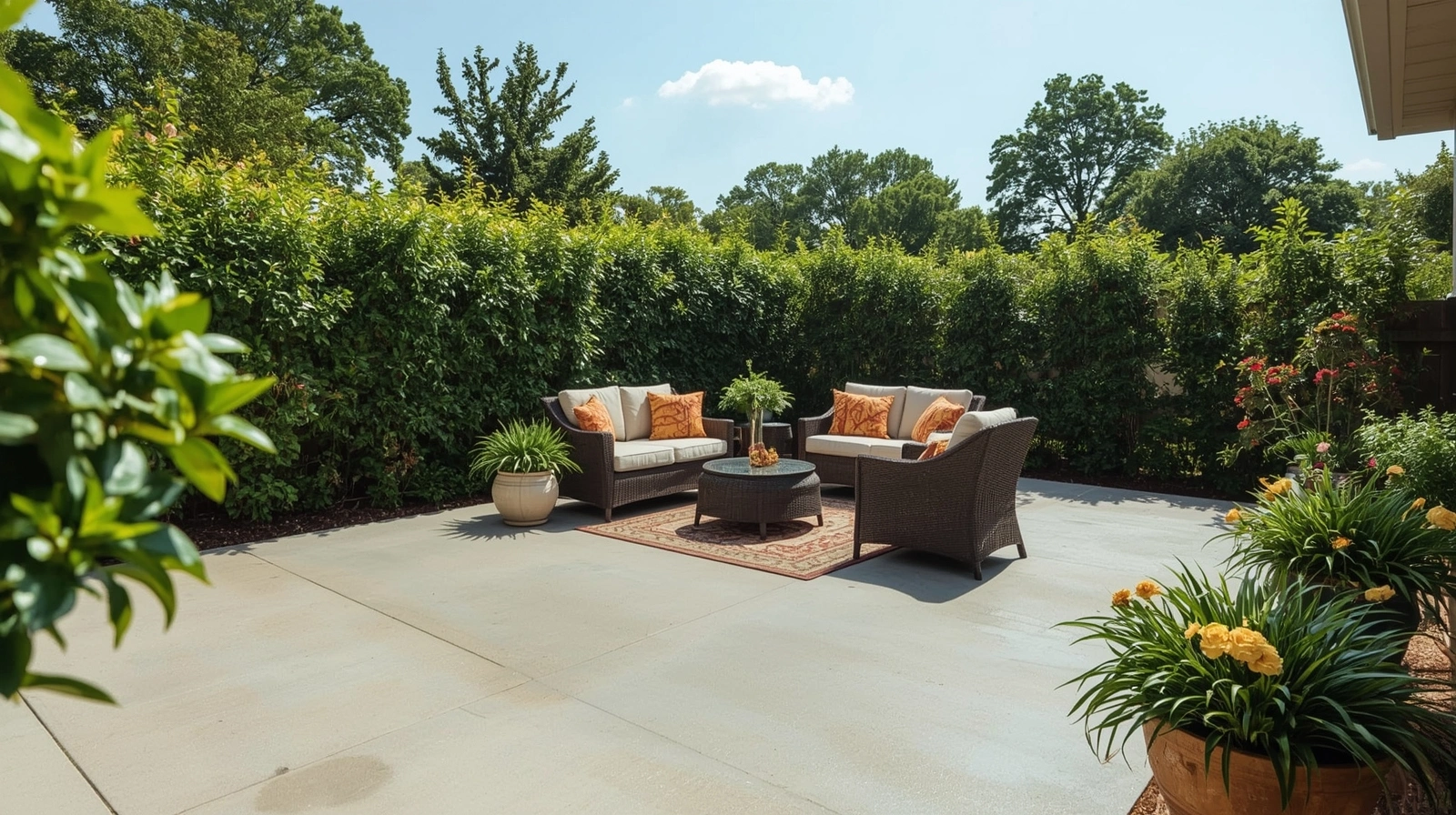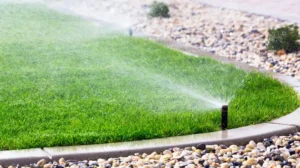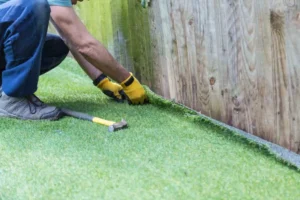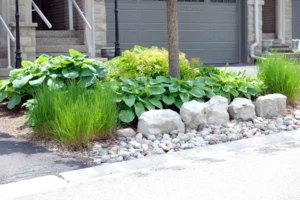Maintaining your concrete patio is not only a great way to improve the appearance of your outdoor area, but also prolong its life. Over time, patios develop dirt, stains, mold, and algae, dulling the surface, and contributing a slippery surface. Fortunately, if you know the best ways to approach cleaning your patio, you can achieve a fresh and clean appearance in short order. From simple household cleaning methods, to specialized concrete stain removers, there are many options for cleaning up tough stains and build-up.
For extra cleaning on patios and deeper stains, many homeowners turn to their favorite concrete cleaning product, which can effectively break down dirt, stains, and algae, without damaging the surface. Your ideal cleaner will often vary based on the stains, and the amount of build-up you have on your patio (patio). Whether you prefer eco-friendly, biodegradable solutions, or your favorite patio cleaner formula, this post will cover the most effective cleaning steps to revive the outdoor space.
Before You Begin

Make sure to remove everything from your concrete patio before applying any concrete patio cleaner. Furniture, grills, plants, or even children’s toys should all be removed so that you have a clear space to work in. You can use a sturdy push broom or even a leaf blower, and just sweep away dust, leaves or any loose debris. After you have cleared the patio, you can spray it down with a garden hose and nozzle to moisten the concrete prior or to help loosen any stuck-on dirt.
When to Clean a Concrete Patio
To keep a concrete patio in good shape, it should be cleaned periodically. Seasonal cleaning can help remove dirt, stains, and algae, while a deep cleaning will be needed after heavy use or weather changes. A concrete stain remover works best for stubborn stains, while quality concrete cleaning solutions can help refresh the surface. If you want long-lasting results, use the best concrete patio cleaner that is intended for outdoor use. A dependable patio cleaner will help ensure that your outdoor space is safe, smells nice, and is inviting for all seasons.
Tools Need To Clean Clean A Concrete Patio
- Stiff-Bristle Brush – Ideal for scrubbing stains after applying a patio cleaner.
- Pressure Washer or Garden Hose – Helps rinse away dirt, algae, and cleaning products thoroughly.
- Bucket & Measuring Cup – For mixing the best concrete patio cleaner with water.
- Protective Gear – Gloves and goggles keep you safe while using concrete cleaning products.
- Scraper or Putty Knife – Useful for removing dried gum, paint, or stubborn debris before applying a concrete stain remover.
- Mop or Squeegee – Speeds up drying and prevents water spots.
Directions for Cleaning a Concrete Patio
A concrete patio that has recently been cleaned looks appealing and will last longer when you regularly maintain it. The right products and the right tools will help you remove mildew, dirt, stains, and buildup, without damaging the concrete surface. Below is a straightforward process that anyone can easily do.
Step 1 — Prepare the Area
Remove furniture, plants, and other décor. Using a stiff broom, sweep the surface to remove dust, leaves, and debris.
Step 2 — Spot Treat Stains
Use a concrete stain remover directly on oil, rust, or grease stains. Let it sit according to the manufacturer instructions and lightly rinse.
Step 3 — Mix Your Cleaner
Select the suitable concrete patio cleaner for your needs. For the most part, a solution that is mild but effective works best on protecting the surface.
Step 4 — Scrub the Patio
Use a stiff brush or deck brush to scrub the cleaner into the concrete. For larger areas, a pressure washer on low will speed up the process.
Step 5 — Rinse and Maintain
Rinse the patio thoroughly with a garden hose, continuing until all residue is gone. A reliable patio cleaning routine every few months is a good way to keep your outdoor area looking fresh and inviting.
Common Mistakes to Avoid When Cleaning Your Concrete Patio
Maintaining a concrete patio is easy, but many homeowners make mistakes that shorten its life or make it dull looking. The main principle is to use the appropriate tools and products and be cautious of practices that can cause damage. Here are some common mistakes to avoid:
Using Harsh Chemicals Without Testing
If you pour strong cleaners directly on the surface, this could cause stains or erosion. Always begin with a concrete stain remover that is safe for outdoor use, and try it on a small spot first.
Choosing the Wrong Cleaning Products
Household detergents or bleach may seem convenient but can leave streaks and discoloration. Invest in quality concrete cleaning products specifically designed for patios.
Over-Scrubbing the Surface
Brushing concrete with metal brushes may scratch the surface. You should instead use the best concrete patio cleaner with a soft-bristle brush or low-pressure washer to achieve the best results.
Forgetting to Rinse Thoroughly
If you do not rinse away your patio cleaner, this can leave residue, attract dirt, and dull the finish. Make sure to always rinse thoroughly to ensure a spotless finish on your patio.
Conclusion:
Having a clean concrete patio not only improves appearance but can increase lifespan and make outdoor spaces more enjoyable. The best method will depend on the stains present and what chemical agents you are able to use. For normal dirt and mildew build-up, widely used concrete cleaning agents with a scrub brush can make your concrete patio look new again in no time. If you have tough stains like stubborn oil, rust, or mold, then a specialized concrete stain removal agent will work effectively, breaking down deeper stains without damaging the concrete surface.
For any homeowner who would rather use a ready-to-use option, your best bet is to invest in a good concrete patio cleaner. A good cleaner is designed to address multiple stains and provide the best and fastest results with the least effort and scrubbing. You may also consider simple patio cleaner options – typically eco-friendly mixes designed for regular maintenance and stain prevention.
Revitalize Your Concrete Patio Today
Follow our easy cleaning guide to restore your patio’s shine and beauty in no time.
FAQs on Cleaning a Concrete Patio
Q1. What is the best concrete patio cleaner for tough stains?
The most suitable concrete patio cleaner is one that can tackle a variety of stains, including oil, rust, and mildew. Choose a product intended for outdoor use, as they will be designed for longevity.
Q2. Can I use household products instead of concrete cleaning products?
Of course, milder solutions, such as baking soda or vinegar, will work to clean light dirt. When it comes to deep-set marks, however, you should use a commercial-grade product for concrete cleaning or a concrete stain remover instead.
Q3. How do I remove oil stains from a concrete patio?
A Quality concrete stain remover may be used on oil stains. Apply the stain remover to the stain, let sit, scrub with a stiff bristle brush and rinse.
Q4. How often should I use patio cleaner?
For optimal outcomes, utilize a patio cleaner at least once a season. In dry, humid areas, you may want to perform the cleaning more often to extend the life of the surface area, and keep the area safe.
Q5. Are eco-friendly concrete cleaning products effective?
Yes, many eco-friendly options are safe for plants and pets while still effective in removing dirt and mild stains from patios.






